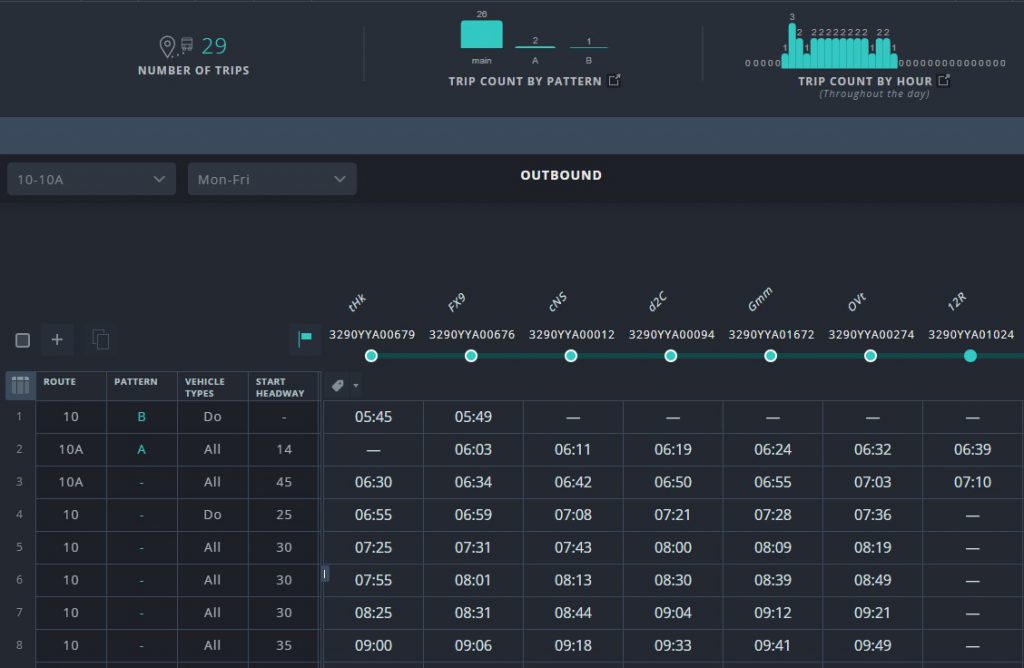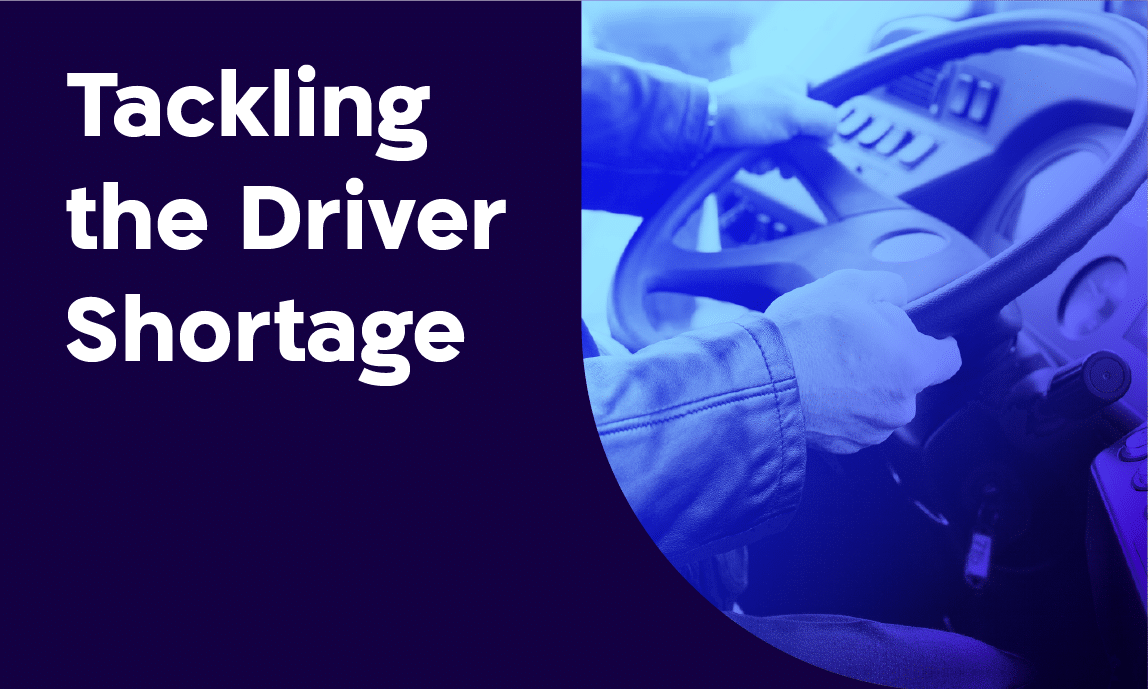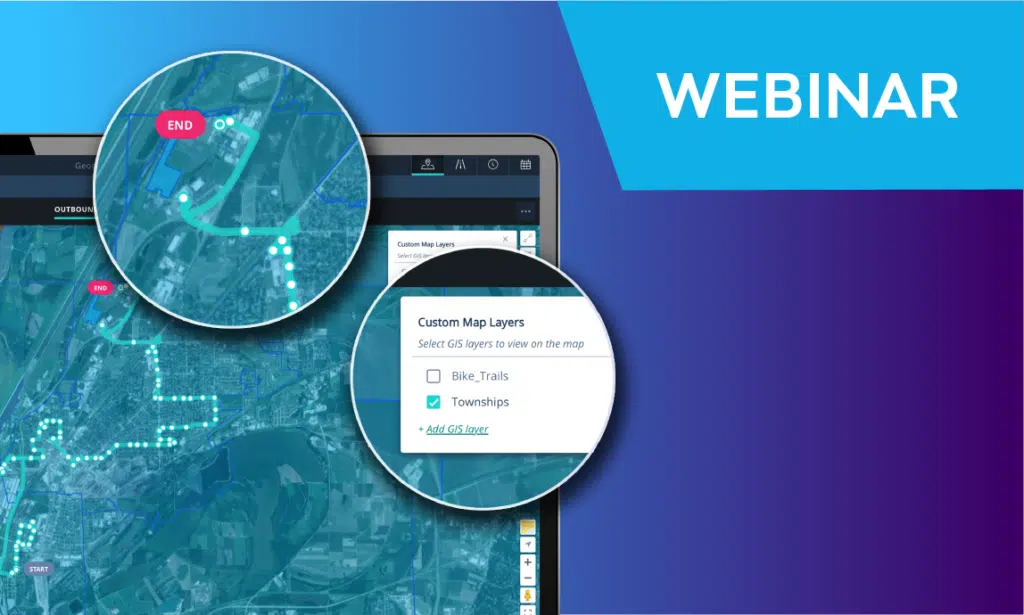When the body’s arteries get clogged, blood flow declines and the heart struggles to pump enough blood at a nice steady pace. And when the arteries that get clogged are those of a city – its main thoroughfares, the high-traffic corridors through which vast numbers of people and vehicles pass each day – then those who live and work in cities are blocked from moving at a nice steady pace. With that urban congestion comes frustration, stress, pollution, and a whole lot of needless waiting time for passengers.
Of course, it’s transportation planners and schedulers, not cardiac surgeons, who clear the arterial blockages afflicting cities. Rather than scalpels and stents, what planners and schedulers need is high-tech transportation planning that accounts not just for individual bus routes but also for the arteries through which they travel – and, at least as important, for the millions of transit riders and prospective passengers traveling through those arteries every day.
Transit providers need to be able to quickly and efficiently plan multiple routes at the same time so they can engage in effective planning that takes major traffic corridors into account and facilitates a steady flow of traffic throughout the city. After all, from the passenger’s point of view, many of the routes that pass through the same corridor are valid options. To deliver frequent and reliable transit – in other words, transit that passengers will want to use – the interplay of multiple routes must be taken into account.
Planning multiple routes at the same time
So how do you plan what a transit system will look like in a city’s main thoroughfares? Well, it helps to see all the routes in one place.
It’s one thing to know that a particular bus route travels down a major thoroughfare, and another to see the timetable for all the routes in the corridor at once. When you view the timetable for all the routes together, it’s easier to see how the transit system can affect passengers waiting for any one of the buses that pass through the corridor. Especially if you can do it quickly and easily with just a few clicks.
Here’s a simplified example, showing a corridor with just two routes (all shared stops are circled in white):

Below are three ways multi-route planning can help transit providers increase operational efficiency while reducing congestion, waiting time and passenger frustration – ultimately setting the stage for an increase in ridership:
Adjusting headways
Who wants to wait half an hour for a bus only to see three buses pull up at once?
One way to reduce bus bunching is by adjusting headways, the time interval between buses moving in the same direction. Schedulers can use Optibus’s planning and scheduling software to adjust headways on one route at a time, or they can analyze arrival and departure times for all buses traveling through the same transit corridor and adjust the headways such that passengers will regularly have a bus available across different routes. Planning all the routes in a corridor simultaneously makes it easier to even headways and reduce bus bunching for the entire corridor.
Coordinating transfer points
The need to transfer from one bus to another or from one mode of fixed-schedule transportation to another can be a deterrent for passengers, in part because the transfers are not always timed smoothly.
If there is too much time between the first vehicle and the second, passengers can get frustrated having to wait too long. If there isn’t enough time, the frustration stems from either having to rush to make the connection or missing the connection altogether. These transfer points can be difficult to plan when viewing one route at a time, but become clearer when planning multiple routes in one timetable.
Interlining
While coordinating transfer points helps passengers make smoother transfers, interlining can be used to eliminate the need for transferring altogether on certain trips. This is important because, as one Journal of Public Transportation study put it, “Travelers strongly dislike transferring.”
Planning multiple routes in the timetable at the same time makes it easier to have buses interline, or switch from one route to another for select trips, at a transfer point that both routes have in common. Optibus’s multi-route planning supports scheduling interlining buses in which the bus and driver switch routes as passengers stay on board. Passengers who would ordinarily need to transfer from one bus to the other at the transfer point can stay on the bus as it switches to a different route, and arrive at their destination without needing to transfer buses.
Of course, this kind of artery-clearing isn’t always easy to do if you don’t have the most advanced instruments in your surgical tray, including advanced optimization algorithms and distributed cloud computing.
Take interlining, for example. There are a lot of variables that go into the best way to link trips together, and it becomes complex pretty soon when you don’t have powerful optimization algorithms at your fingertips. The algorithms automatically figure out the most efficient ways to schedule vehicles and drivers, based on each transit provider’s specific preferences. At the same time, distributed cloud computing speeds up the whole process.
High-quality optimization that’s also really fast – in seconds or minutes instead of days or weeks – means transit providers can try out a whole bunch of scenarios and, once they see the outcome, select the one that’s most operationally efficient, cuts costs the most, and serves passengers the best.
Whether transit providers are adjusting headways, coordinating transfer points or interlining, the complexities of multi-route planning are made simpler when planners and schedules partner up with sophisticated technology as they work to unclog those congested urban arteries.



